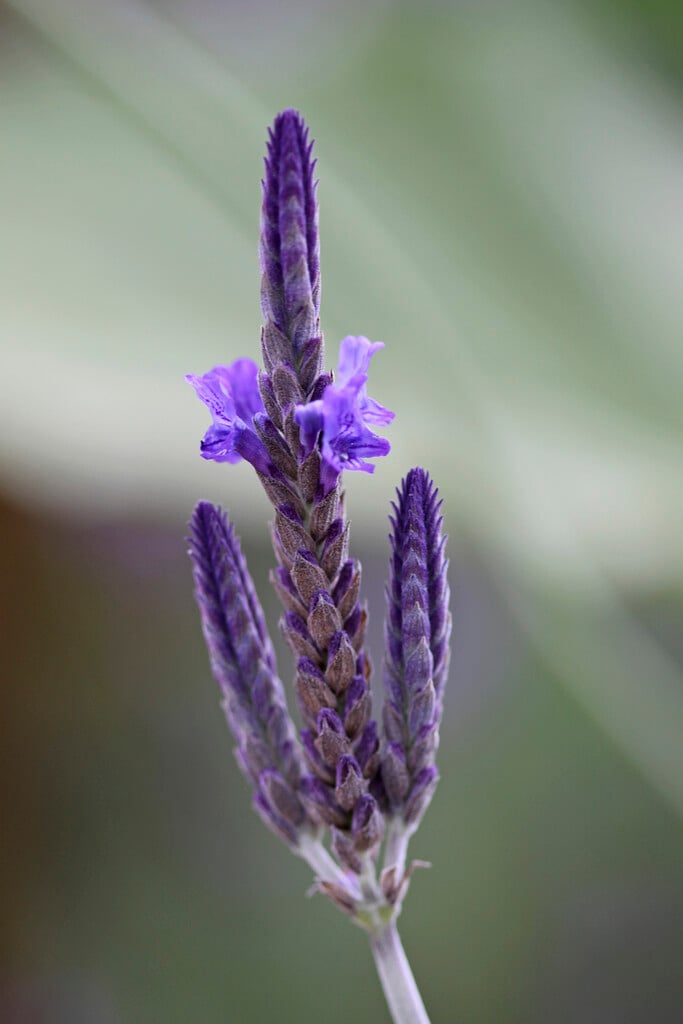Lavandula pinnata
fern leaf lavender
A bushy, spreading evergreen shrub about 1m in height, with fern-like white-hairy, grey-green leaves, and bearing unbranched spikes of fragrant blue-purple flowers to 9cm long, in late summer
Other common names
jagged lavenderSize
Ultimate height
0.5–1 metresTime to ultimate height
2–5 yearsUltimate spread
0.1–0.5 metresGrowing conditions
Moisture
Well–drainedpH
Acid, Alkaline, NeutralColour & scent
| Stem | Flower | Foliage | Fruit | |
| Spring | Grey Silver | |||
|---|---|---|---|---|
| Summer | Blue | Grey Silver | ||
| Autumn | Grey Silver | |||
| Winter | Grey Silver |
Position
- Full sun
Aspect
South–facing or West–facing
Exposure
Sheltered Hardiness
H3Botanical details
- Family
- Lamiaceae
- Native to GB / Ireland
- No
- Foliage
- Evergreen
- Habit
- Bushy
- Genus
Lavandula are small aromatic evergreen shrubs with usually narrow, simple, entire, toothed or lobed leaves and small tubular flowers in dense spikes in summer
- Name status
Correct
- Plant range
- Canary Islands, Maderia
How to grow
Cultivation
Grow in well-drained soil in a sheltered, sunny position. In colder areas, may need protection from very low temperatures and excess winter wet. Also suitable for growing in containers that can be overwintered in an unheated greenhouse. See lavender cultivation for further advice
Propagation
Suggested planting locations and garden types
- City and courtyard gardens
- Cottage and informal garden
- Coastal
- Mediterranean climate plants
- Patio and container plants
- Wildlife gardens
- Conservatory and greenhouse
Pruning
Pruning group 10 after flowering. Lightly trim in spring if necessary.
Pests
May be susceptible to rosemary beetle, cuckoo spit and sage leafhopper
Diseases
High Risk Host for Xylella fastidiosa. May be susceptible to grey moulds (Botrytis) and honey fungus (rarely)
Love gardening
Sign up to receive regular gardening tips, inspiration, offers and more
View our Privacy Policy
Get involved
The Royal Horticultural Society is the UK’s leading gardening charity. We aim to enrich everyone’s life through plants, and make the UK a greener and more beautiful place.
